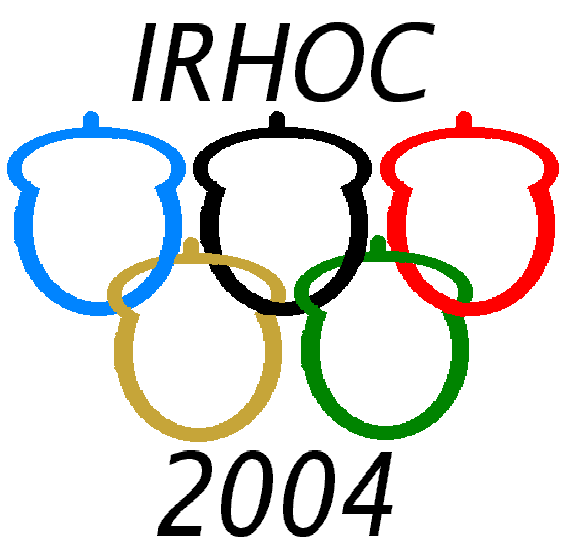

The History of the Winter Olympics
The first winter sports to be included in the Olympic Games were skating and ice hockey, at the 1908 Olympics in London.
The first true "white Olympics" however were held at Chamonix in 1924. In 1921 the International Week of Winter Sports was launched, with demonstrations of cross country skiing, Nordic combined, ski jumping, artistic skating, speed skating, bobsled and ice hockey. The great hero was the Finn, Clas Thunberg, who was recorded in the history books for a total of six hours of speed skating. Curiously, alpine skiing was only introduced in 1936 at Garmisch-Panterkirchen, by the efforts of Sir Arnold Lunn, the English nobleman who had organized the sport's first world cup in 1931.
After the war, the Winter Olympic Games started again in 1948 at Saint Moritz. Swedish athletes, who hadn't taken part in the war, outshone the athletes from the other nations in all the events. Martin Lundstrom and Nils Karlsson painted the podiums blue and yellow in the cross country. At Oslo in 1952, the giant slalom was introduced, as well as the women's cross country. In this chapter of Olympic history, the pages are dominated by the performance of the Norwegian skater, Hjalmar Johan Andersen, with three golds for the speed skating. The Italian Zeno ColÚ, who had already won the world cup in Colorado, triumphed in the downhill.
The 1956 Games at Cortina were dominated by the Soviets. On an individual level, the Austrian Toni Sailer was proven a great athlete, breaking the records with three gold medals in the three alpine skiing disciplines. In 1964 the Games were held at Innsbruck. By this time, electronic timing had become a reality and television allowed footage of every event to be beamed around the world. The first skiing world cup was held in 1967, and a year later at Grenoble in 1968, Jean-Claude Killy had France singing "La Marseillaise" with the second ever "grand slam" performance in Olympic history, winning the downhill, giant slalom and slalom events.
Sapporo in 1972 was the year of Gustav Thoeni, who won the giant slalom. The Italians Paul Hildgartner and Walter Plaikner recorded equal placing in the pairs luge, while the cousins, Gustav and Roland Thoeni took home the silver and the bronze in the slalom, with only two hundredths of a second separating them.
In 1976, Denver withdrew its Games and Innsbruck took advantage of the opportunity to host the Games once again. The East German, Rosi Mittermaier won over the spectators by winning the downhill, then the slalom and then finally second place in the giant slalom. The "valanga azzurra" dominated the men's slalom with the pair Pierino Gros and Gustav Thoeni, coming first and second in the event. At Lake Placid in 1980, the mood of the Cold War weighed heavily of the participants. From one side, the accustomed supremacy of the Soviet athletes, and from the other, the American response with five gold medals to Eric Arthur Heiden in the speed skating and victory in the ice hockey. The legendary Swedish skier, Ingemar Stenmark dominated the alpine skiing event with gold medals in slalom and in the giant slalom.
The novelty in Calgary 1988 was the introduction of the super giant slalom. It was also the Olympic debut of the famous Italian Alberto Tomba, who had already won the bronze at the world cup the year before, taking away the gold in the slalom and the giant slalom. Albertville in 1992 was the materialization of the Italian dream. Josef Polig won the combined, Deborah Compagnoni took gold in the super giant slalom, "Tomba-la bomba" won the giant slalom and four days later came second in the slalom.
But Italy's triumph hadn't yet come to an end. In the cross country, the men's relay team claimed victory, followed by a silver to De Zolt for the 50km event, Giorgio Vanzetta took home the silver in the relay, bronze in the 50km and the Nordic combined, and the women's relay team also made it to the podium with a bronze. Stefania Belmondo, who was part of the women's relay team also triumphed in the 30km cross country and won silver in the Nordic combined. But the domination of cross country by the Norwegian Bjorn Daehlie also began here, whose performance over the coming years would bring him a legendary six gold medals in all.
The Games of Lillehammer were held in 1994, changing the periodicity of the event to alternate with the summer games. Italy won a record 20 medals. Manuela Di Centa gave her best in the cross country and was anointed queen of the Games, by winning gold in the 15 and 30km individual, silver in the 5 and 15km pursuit and bronze in the relay. Silvio Fauner, Maurilio De Zolt, Marco Albarello and Giorgio Vanzetta took victory in the 4x10km relay, upsetting those with the home ground advantage. The 18th Winter Olympic Games were hosted by Nagano in 1998, and were troubled by difficult weather conditions, which meant repeated changes to the program. Curling, snowboarding and women's ice hockey were all introduced to the Games.
Salt Lake 2002 in Utah, witnessed one of the most thrilling encounters ever seen in an Olympic Games during the final of the men's ice hockey. Canada, who had been thirsty for an Olympic title for the last 50 years, triumphed over the United States, unbeaten on home turf for 70 years. Now, all eyes are turned towards Torino 2006, which will seek to repeat the organizational success of the last Italian Olympic Games at Cortina, by providing the best competitive conditions for the world's best winter sports' athletes.
(As found on the Torino, Italy 2006 Winter Olympic website; check it out, its a cool page! In no way does the IOC or Torino Olympic Committee Support IRHOC 2004)
www.torino2006.org/